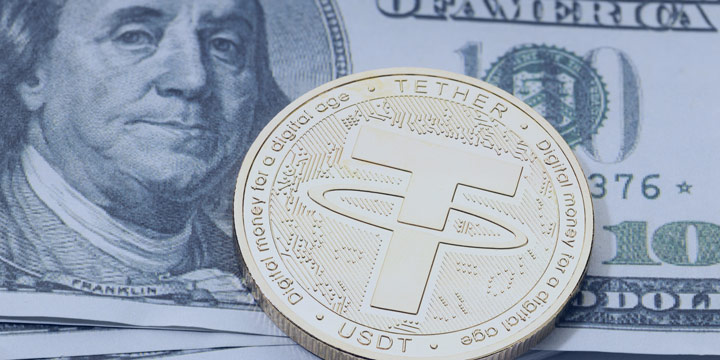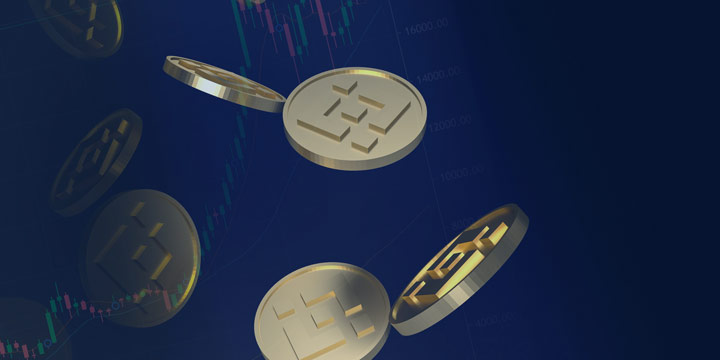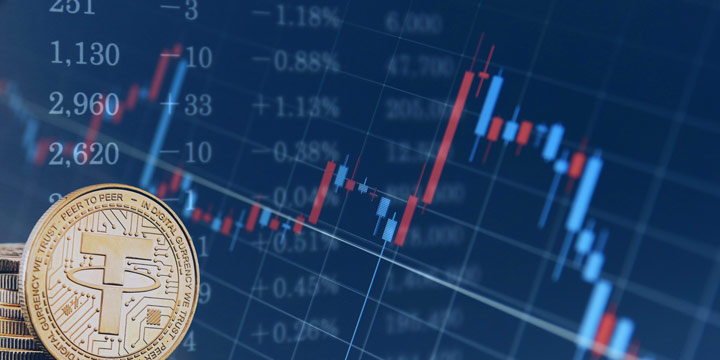Are you curious about stablecoins and how their prices work? If so, you’re in the right place!
Stablecoins have gained attention in the cryptocurrency world due to their ability to provide stability in an otherwise volatile market. The current market cap of ~$130 billion proves the market significance of stablecoins.
And have you ever wondered how these digital assets maintain a stable price amidst high volatility? In this article, we’ll unravel the mechanics behind the stablecoin price.
What are Stablecoins?
Stablecoins, as the name suggests, are a type of cryptocurrency designed to offer stability in an otherwise volatile market.
And how does a stablecoin minimize price volatility?
Unlike other digital coins such as Bitcoin or Ethereum, stablecoins aim to peg their value to an external asset, typically a fiat currency like the US dollar. This pegging ensures the stablecoin price remains steady, making it an attractive option for various use cases in the crypto ecosystem.
Let’s dive slightly deeper into price pegging.

The Price Pegging Concept
Stablecoins are designed to maintain a stable value, typically pegged to a specific asset or a basket of assets. This pegging ensures the stablecoin price remains relatively constant. But how does this price pegging work?
To understand it better, let’s take the example of a popular stablecoin like USD Coin (USDC). USDC aims to maintain a 1:1 ratio with the US dollar. For every USDC token in circulation, there should be an equivalent amount of US dollars held in reserve by the issuer. So, the current price of USDC is always tied to the value of the US dollar.
But why is it significant to grasp the inner workings of stablecoin price mechanics?
The Importance of Grasping Stablecoin Working Mechanisms
Well, stablecoins have become an integral part of the cryptocurrency landscape, with their market capitalization peaking at ~ $200 billion in recent years. They serve as a bridge between the crypto world and traditional financial systems, providing stability and ease of use for users seeking to navigate the ever-evolving digital economy.
Understanding how stablecoin prices are determined and maintained is essential, especially when using them for transactions, investments or as a store of value. Imagine predicting how the value of a stablecoin, such as the popular USD coin (USDC), will fluctuate in different market conditions. This knowledge empowers you to make informed crypto decisions while navigating the cryptocurrency ecosystem.
In a market notorious for its high volatility, stablecoins provide the stability levels individuals and businesses seek. But how exactly do stablecoins manage to maintain their pegged value? What mechanisms are at play behind the scenes?
Before answering these questions, let’s look at different stablecoin options in the market.

Exploring the Types of Stablecoins
Stablecoins come in different forms, each with its mechanism for maintaining stability. Let’s take a look at the most common types:
Fiat currencies like the US dollar or the euro back these stablecoins, held in reserve by a centralized entity. A stablecoin gets issued according to the value of the corresponding fiat currency held in custody. If a stablecoin pegs to the US dollar, the issuer will hold one US dollar for each stablecoin in circulation.
Unlike fiat-collateralized stablecoins, these stablecoins receive backing from other cryptocurrencies. Here, holding a reserve of various crypto assets, which generally exhibit higher volatility than fiat currencies, helps maintain the stablecoin’s value. The collateral’s value serves the purpose of stabilizing the stablecoin’s price.
Complex algorithms regulate the supply and demand of these stablecoins, ensuring price stability. The goal is to adjust the stablecoin’s supply and maintain a stable price.
With a foundational understanding of stablecoins and their various types, let’s explore the determination of stablecoin prices and the factors influencing their value.
Another type of stablecoin is the commodity-backed coin. These assets are pegged to physical commodities like gold.

Mechanisms for Determining Stablecoin Prices
There are three methods for stablecoin price determination we’ll discuss.
1. Centralized Collateralization
In this approach, the stablecoin issuer maintains a reserve of assets, including fiat currencies or other crypto assets, to back the stablecoin’s value. These reserves serve as collateral, instilling users with confidence in the redeemability of the stablecoin for its underlying value.
For instance, the issuer of a stablecoin like USDC can hold a reserve of US dollars in a bank account, ensuring the circulating supply of USDC has an equivalent reserve of US dollars to back it up. It also means the stablecoin total supply is equal to its market capitalization.
As market demand for USDC increases, the issuer can mint more tokens using the reserved funds, thereby maintaining the pegged value of the stablecoin.
2. Decentralized Collateralization
Decentralized stablecoins rely on smart contracts and decentralized finance (DeFi) protocols to maintain their pegged price. Instead of a centralized entity holding the collateral, these stablecoins use decentralized mechanisms, such as over-collateralization and algorithmic rebalancing, to stabilize their price.
A stablecoin such as USDP, which is the native cryptocurrency of Paxos, a stablecoin that uses the Ethereum blockchain and is issued by the Paxos Trust Company, may require users to deposit crypto assets as collateral. Users lock these assets into smart contracts, which reserve them to support the stablecoin’s value.
When the stablecoin’s price deviates from its peg, the smart contracts automatically adapt the collateralization ratio to encourage users to mint or burn stablecoins, restoring the stablecoin price to its intended target.
3. Algorithmic Stablecoin
A stablecoin may have an algorithm expanding or contracting its circulating supply based on set parameters, such as price volatility or the demand-supply ratio. By dynamically altering the supply, the stablecoin’s algorithm aims to stabilize its price within a predefined range.
With our simple explanations, the next time you encounter stablecoins like USDC or USDP, you’ll have a clearer picture of how their prices are maintained and why they strive to keep their value steady.
Factors Influencing Stablecoin Price
Let’s examine what affects stablecoin prices.
Buying and Selling Pressure
Every transaction involving stablecoins affects its price. High demand for stablecoins drives up the price as buying pressure intensifies. Conversely, increased selling pressure exerts downward pressure on the price. This interplay between buyers and sellers generates a perpetual tug-of-war in the stablecoin market.
Can you imagine how user buying and selling decisions impact the stability of stablecoin prices? The answer lies in the delicate balance between supply and demand.
Market Liquidity
Liquidity refers to the ease with which stablecoins can be bought or sold in the market without significantly impacting their price. Stablecoins with higher liquidity tend to have a more stable price. Market liquidity depends on the number of active users, the trading volume on exchanges, and the depth of the order books. The circulating supply of the stablecoin also dictates its liquidity.
Human Factor Dictating Market Perception
Apart from the fundamental supply and demand factors, market sentiment and speculation influence stablecoin prices.
Investor sentiment and market perception can significantly impact stablecoin prices. Positive news, endorsements from influential figures, or successful use cases can generate increased demand and drive stablecoin prices. Conversely, negative sentiment or concerns about a stablecoin’s underlying stability can lead to price declines.
We’ll explore the consequences of unpegged stablecoins in the next section.
Stablecoin Price and Unpegging
There are instances when stablecoins experience fluctuations in their price, becoming unpegged from their intended value.
Let’s look at the causes behind these price fluctuations.

Insufficient Collateralization
For a stablecoin pegged to the US dollar, if the value of the USD depreciates or experiences volatility, it can impact the stability of the stablecoin. In such a scenario, the stablecoin’s price may fluctuate, causing it to become unpegged.
External Market Shocks
The cryptocurrency market is highly volatile, and sudden market movements can affect stablecoin prices. Factors such as large sell-offs, significant price swings in major cryptocurrencies, or even negative news affecting the broader market can cause instability in stablecoin prices.
When traders and investors experience uncertainty or fear in the market, they often seek refuge in stablecoins as a haven. This increased demand can drive up the price of stablecoins. Conversely, if market sentiment turns negative, decreasing stablecoin demand, their prices may drop, deviating from the pegged value.
So, how will the price change affect the stablecoins?
Impact of Unpegging on Stablecoins
Let’s explore the key impacts of unpegging on stablecoin holders.

Loss of Value
If a stablecoin initially had a 1:1 peg to the US dollar but becomes unpegged due to price fluctuations, dropping to 0.90 USD, holders may suffer a 10% loss on their holdings.
This loss of value can be particularly concerning for users who rely on stablecoins for stability and as a store of value. It can also impact traders and merchants who accept stablecoins for goods and services, as the value they receive may differ from their expectations.
Market Volatility
Unpegging can introduce market volatility, which may have broader implications for the stability of the cryptocurrency market. Users frequently utilize stablecoins to transfer funds between different exchanges or to trade them alongside cryptocurrencies. When stablecoins become unpegged, it can disrupt these trading activities and introduce uncertainty.
So, how is the market stopping stablecoin unpegging to protect their value?

Measures to Prevent Unpegging and Price Volatility
Stablecoins, serving as a bridge between volatile digital assets and traditional fiat currencies, are prone to fluctuations like any other financial instrument. To maintain stability, here are measures for preventing unpegging and ensuring price consistency for these digital assets.
- Transparency in Reserves – Stablecoin issuers can instill confidence by disclosing detailed reports on the assets backing their stablecoins. Knowing the composition and values of reserves enables users to assess stability.
- Third-Party Audits – Engaging reputable auditors to validate reserves provides an extra layer of assurance. Independent audits verify accuracy and ensure stablecoins are backed as claimed.
- Regulatory Frameworks – Governments can introduce clear regulations governing stablecoin operations. Addressing collateralization, reserve management, and transparency standards promotes stability and user confidence.
Implementing these measures strengthens stablecoin stability, reducing unpegging risks and price volatility. Transparent reserves, third-party audits, regulatory frameworks and surveillance mechanisms build trust among users, benefiting the broader cryptocurrency ecosystem.
Let’s now shift to a secure platform where you can store and utilize stablecoins.
Derive Stablecoin Utility with CoinPayments’ Supportive System
If you own stable coins or intend to trade using stablecoins, then CoinPayments is for you. With real-time token transactions, excellent customer service and practical features applicable to businesses and individuals, you can extract value from stablecoins in the market.
As the go-to platform for any project integrating cryptocurrency payments, CoinPayments is trusted by thousands of users since 2013. You’ll benefit from a global presence, with support for worldwide crypto transactions.
With the introduction of the new Crypto OTC service, you can access stablecoins of all kinds regardless of their market cap.
Leverage your new stablecoin knowledge to start benefiting from them. Integrate CoinPayments to take advantage of the extensive market presence of stablecoins.
Visit the CoinPayments website to learn more.








